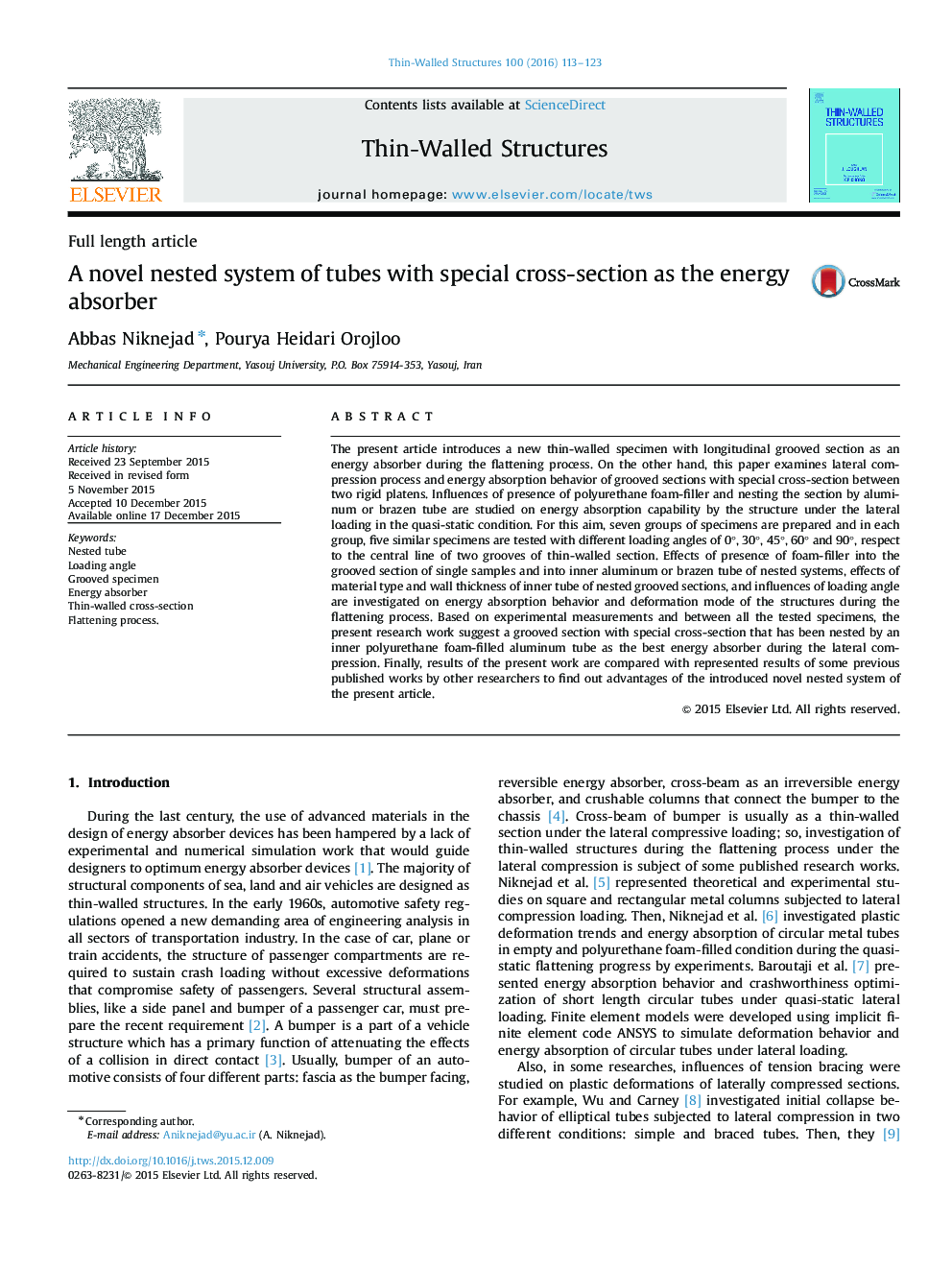| Article ID | Journal | Published Year | Pages | File Type |
|---|---|---|---|---|
| 308427 | Thin-Walled Structures | 2016 | 11 Pages |
•This article presents a new nested sample with special section as energy absorber.•Grooved sections and nested systems are tested during lateral flattening process.•Effects of loading angle are studied on energy absorption behavior of structures.•Influences of material type and wall thickness of inner tube are studied.•Effects of filling the foam into the grooved section and inner tube are studied.
The present article introduces a new thin-walled specimen with longitudinal grooved section as an energy absorber during the flattening process. On the other hand, this paper examines lateral compression process and energy absorption behavior of grooved sections with special cross-section between two rigid platens. Influences of presence of polyurethane foam-filler and nesting the section by aluminum or brazen tube are studied on energy absorption capability by the structure under the lateral loading in the quasi-static condition. For this aim, seven groups of specimens are prepared and in each group, five similar specimens are tested with different loading angles of 0°, 30°, 45°, 60° and 90°, respect to the central line of two grooves of thin-walled section. Effects of presence of foam-filler into the grooved section of single samples and into inner aluminum or brazen tube of nested systems, effects of material type and wall thickness of inner tube of nested grooved sections, and influences of loading angle are investigated on energy absorption behavior and deformation mode of the structures during the flattening process. Based on experimental measurements and between all the tested specimens, the present research work suggest a grooved section with special cross-section that has been nested by an inner polyurethane foam-filled aluminum tube as the best energy absorber during the lateral compression. Finally, results of the present work are compared with represented results of some previous published works by other researchers to find out advantages of the introduced novel nested system of the present article.
